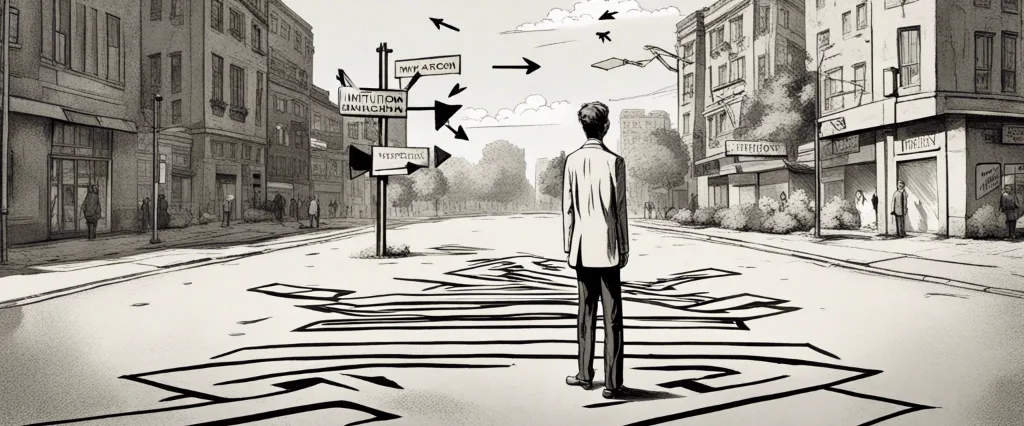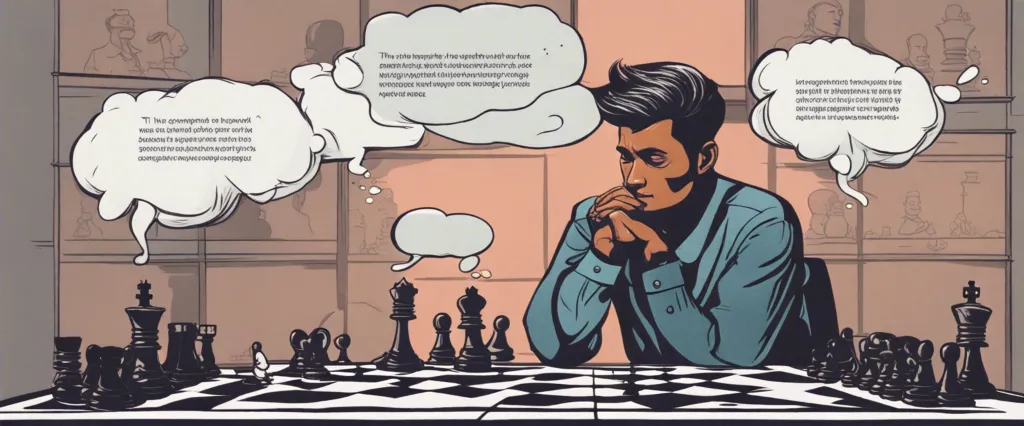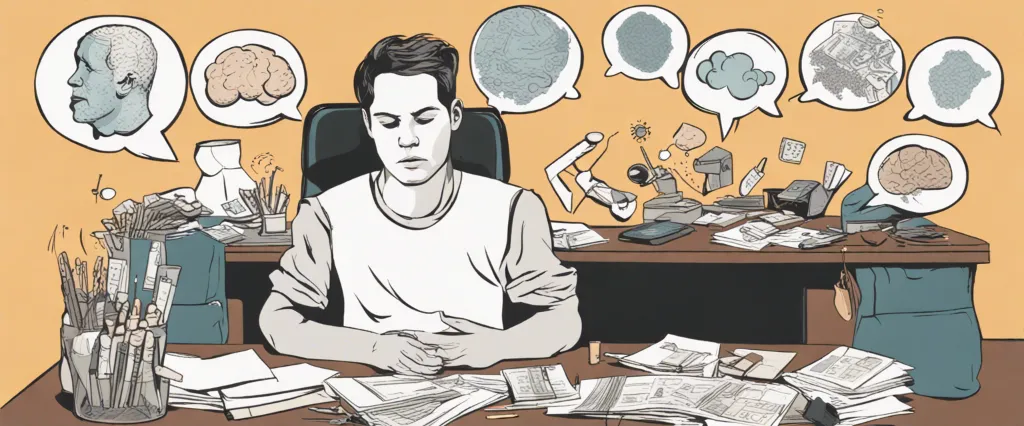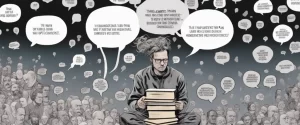
In the vast realm of literature dedicated to exploring the intricacies of human thought and decision-making, two books stand out as landmarks of intellectual inquiry: “Think Again” by Adam M. Grant and “Thinking Strategically” by Avinash K. Dixit. Each of these captivating works ventures deep into the realms of cognitive psychology and behavioral economics, offering unique perspectives on how our minds navigate the complexities of life and the choices we face.
In “Think Again,” Adam M. Grant, a renowned organizational psychologist and professor at the Wharton School, delves into the transformative power of rethinking our beliefs and assumptions. Through riveting anecdotes and evidence-based insights, Grant explores the importance of intellectual humility, curiosity, and open-mindedness in the pursuit of truth and personal growth. Drawing from a broad range of disciplines, including psychology, philosophy, and social science, Grant presents a compelling case for the rejuvenating art of rethinking, offering readers a roadmap to challenge their long-held convictions and embrace the uncertainty that accompanies genuine intellectual exploration.
On the other side of the comparative spectrum, “Thinking Strategically” by Avinash K. Dixit, a renowned economist and Professor Emeritus at Princeton University, invites readers to embark on a comprehensive journey into the world of strategic decision-making. Drawing heavily from game theory and real-life examples, Dixit explores the application of strategic thinking across a diverse array of situations, from business negotiations to political conflicts. With meticulous analysis and cogent explanations, he elucidates the principles behind effective decision-making, emphasizing the need for foresight, critical analysis, and the ability to anticipate and counteract the choices and behaviors of others.
While both books delve into the intricate workings of our minds and decision-making processes, they diverge in their approach, tone, and focus. “Think Again” leans towards personal growth and introspection, centering on the cultivation of individual virtues like humility and curiosity. In contrast, “Thinking Strategically” skews towards a more pragmatic and strategic outlook, providing readers with practical tools and frameworks to navigate complex decision-making scenarios.
In this comparative study, we aim to explore the intersecting themes and divergent perspectives presented in these two thought-provoking works. By juxtaposing the insights of Grant and Dixit, we hope to gain a more nuanced understanding of the human thought process, our biases, and the strategies that can enable us to make more informed and effective decisions. Delving into the realms of psychology, economics, and behavioral sciences, we invite readers to embark on a comparative voyage that will challenge conventional wisdom, broaden our intellectual horizons, and ultimately enhance our capacity to think critically and strategically in the face of ambiguity and uncertainty.
Brief Summary of Two Books
Think Again by Adam M. Grant
“Think Again: The Power of Knowing What You Don’t Know” by Adam M. Grant explores the importance of open-mindedness and the ability to rethink our beliefs, opinions, and assumptions. The book argues that in a rapidly changing world, our fixed mindset can hinder our personal and professional growth and prevent us from adopting new ideas or reconsidering our established views. Grant emphasizes the need for intellectual humility, curiosity, and cognitive flexibility as vital skills to navigate uncertainty and complexity.
The book is divided into three main sections. In the first, Grant challenges readers to recognize their own cognitive blind spots and the factors that often lead to closed-mindedness, such as ego, confirmation bias, and tribalism. Through various examples and studies, he illustrates how excessive conviction can trap individuals in a loop of faulty reasoning and outdated knowledge, hindering progress and innovation.
In the second section, Grant turns to the concept of intellectual humility as a remedy for closed-mindedness. He explores the benefits of being open to new information, different perspectives, and feedback. The book delves into strategies for fostering intellectual humility, such as seeking out diverse opinions, embracing constructive criticism, and recognizing the limitations of our own knowledge.
The final section focuses on how to develop the habit of rethinking. Grant provides practical advice on how to challenge our own beliefs, question assumptions, and engage in productive debates. He also explores the role of organizations and leaders in creating environments that encourage and reward intellectual humility and flexible thinking.
Overall, “Think Again” invites readers to rethink their own thinking, encouraging intellectual curiosity, humility, and a willingness to revise one’s beliefs in the pursuit of growth and personal development. It presents a compelling case for the importance of being open to new ideas and consistently reevaluating our assumptions in an increasingly complex world.
Thinking Strategically by Avinash K. Dixit
Thinking Strategically by Avinash K. Dixit is a book that explores the concept of strategic thinking and its applications in various aspects of life, from business to personal decision-making. In this book, Dixit and his co-author Barry J. Nalebuff, explain how to anticipate and react to the behavior of others, maximize outcomes, and make well-informed decisions in uncertain situations.
The authors emphasize the importance of game theory as a tool for strategic thinking. They provide numerous real-world examples and anecdotes to illustrate how game theory can be applied to a wide range of scenarios, such as pricing strategies, negotiation tactics, competitive bidding, and even personal relationships.
Thinking Strategically teaches readers how to analyze situations through the lens of game theory, focusing on understanding the motivations, incentives, and constraints of all involved parties. It also explores the notion of imperfect information and how it impacts decision-making, emphasizing the significance of gathering relevant information and using it to one’s advantage.
Furthermore, the book discusses various strategies that can be employed in different scenarios, including the use of threats, commitment, bluffing, and cooperation. It also delves into the concept of creating and maintaining a competitive edge, offering insights into how individuals and businesses can develop strategic plans to achieve their goals successfully.
Overall, Thinking Strategically offers readers a practical framework to enhance their decision-making and problem-solving skills. It provides a theoretical foundation, accompanied by practical tips and techniques, making it a valuable resource for anyone seeking to improve their strategic thinking abilities.
Comparison between Two Books

Similarities in Decision Making
Both “Think Again” by Adam M. Grant and “Thinking Strategically” by Avinash K. Dixit focus on decision-making and offer valuable insights and strategies for making better and more effective decisions. Here are some similarities between the two books regarding decision-making:
1. Importance of questioning assumptions: Both books emphasize the significance of questioning and challenging one’s assumptions. They highlight the limitations of blindly accepting existing beliefs and encourage readers to engage in critical thinking to uncover new perspectives and possibilities.
2. Embracing cognitive flexibility: The books advocate for cognitive flexibility, which involves being open-minded and willing to adapt one’s thinking when faced with new information or alternative viewpoints. They stress the need to avoid cognitive biases and the dangers of being stuck in rigid thinking patterns.
3. Analyzing trade-offs and risks: Both books stress the importance of carefully considering trade-offs and risks when making decisions. They provide frameworks and tools to assess potential risks and trade-offs associated with different choices, helping readers make more informed and calculated decisions.
4. Decision-making as a process: Rather than viewing decision-making as a one-time event, both books approach it as an ongoing process that requires continuous improvement and reflection. They discuss the iterative nature of decision-making and encourage readers to learn from their experiences and mistakes.
5. Balancing intuition and analysis: Both books argue for a balanced approach to decision-making, acknowledging the value of intuition while also highlighting the importance of rational analysis. They propose methods to combine intuitive insights with logical reasoning, allowing for well-informed and well-rounded decisions.
6. Considering long-term consequences: The books highlight the need to think beyond short-term gains and consider the long-term consequences of decisions. They explore the concept of strategic thinking and emphasize the significance of considering how choices impact future outcomes.
Overall, both “Think Again” and “Thinking Strategically” provide readers with practical guidance on improving decision-making processes by challenging assumptions, exercising cognitive flexibility, weighing trade-offs, emphasizing long-term thinking, and finding a balance between intuition and analysis.
Divergences in Decision Making
Think Again by Adam M. Grant and Thinking Strategically by Avinash K. Dixit are both books that delve into the intricacies of decision-making, but they approach the subject from slightly different angles. While both books emphasize critical thinking and strategic decision-making, they diverge in terms of their focus and the frameworks they provide.
Divergence 1: Focus
Think Again by Adam M. Grant primarily focuses on the importance of adopting a flexible mindset, challenging assumptions, and rethinking beliefs and opinions. Grant encourages readers to overcome cognitive biases and embrace intellectual humility in order to make better decisions. The book delves into the psychology behind decision-making, exploring topics such as confirmation bias, motivated reasoning, and the need for cognitive diversity.
On the other hand, Thinking Strategically by Avinash K. Dixit takes a more strategic and game-theory approach to decision-making. The book explores the ways in which individuals and organizations can use strategic thinking to gain an advantage in competitive situations. It covers concepts such as game theory, bargaining, and the analysis of competitive situations.
Divergence 2: Decision-Making Frameworks
Think Again emphasizes the importance of constantly questioning and updating one’s beliefs and opinions. Grant provides readers with practical strategies to challenge their own thinking, such as seeking out opposing views, engaging in debate, and actively seeking feedback. The book also showcases real-life examples of individuals and organizations that have benefited from thinking differently and embracing the potential for cognitive change.
In contrast, Thinking Strategically provides readers with a set of analytical frameworks and tools to approach decision-making strategically. Dixit focuses on topics like decision trees, backward induction, and the analysis of strategic interactions. The book offers numerous case studies and practical examples to illustrate the application of these frameworks in real-world scenarios.
In summary, while both Think Again by Adam M. Grant and Thinking Strategically by Avinash K. Dixit explore decision-making, they have differing focuses and frameworks. Think Again emphasizes the need for intellectual humility and adaptive thinking, whereas Thinking Strategically delves into analytical frameworks such as game theory and strategic analysis.

Conclusion
Both “Think Again” by Adam M. Grant and “Thinking Strategically” by Avinash K. Dixit are highly regarded books that offer valuable insights in different areas of thinking. The choice of which book is more worthy of reading ultimately depends on your personal interests and needs.
“Think Again” focuses on the importance of critically reevaluating our beliefs and being open to changing our minds. It explores the concept of rethinking in order to improve decision-making, increase creativity, and foster personal growth. This book is relevant for individuals who want to develop a more flexible mindset and become more effective at challenging their own assumptions.
On the other hand, “Thinking Strategically” delves into the realm of game theory and decision-making in competitive situations. It provides practical frameworks and strategies for analyzing and making strategic choices. This book is suitable for individuals interested in enhancing their strategic thinking skills, whether in personal or professional contexts.
In conclusion, both books offer valuable perspectives and can contribute to your intellectual growth; the choice between them depends on your specific area of interest. If you’re more interested in personal growth and decision-making, “Think Again” may be more appealing. However, if you’re seeking to improve your strategic thinking abilities, “Thinking Strategically” would be a better choice.


